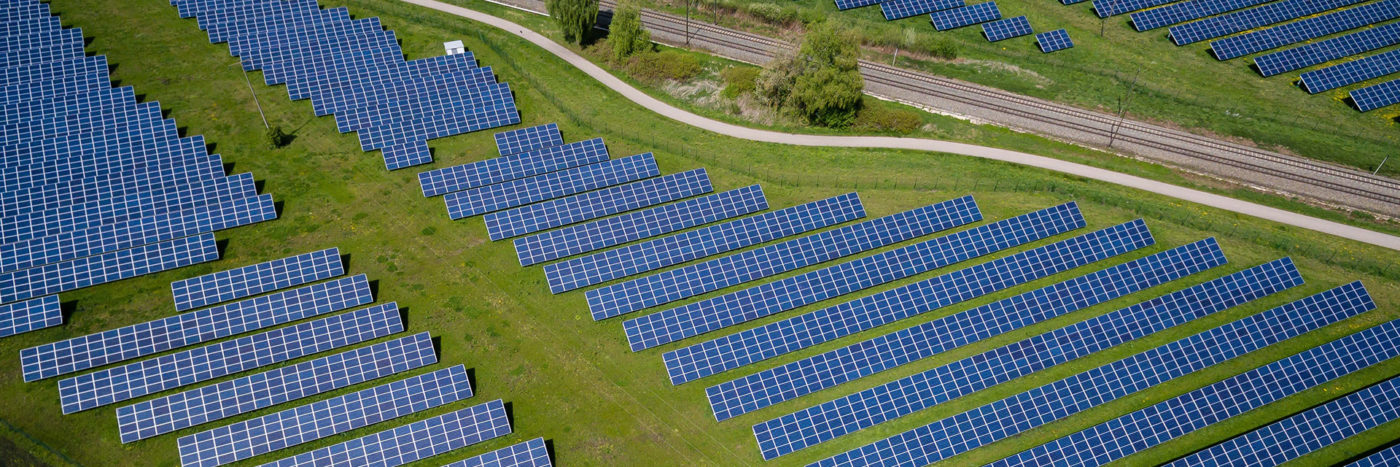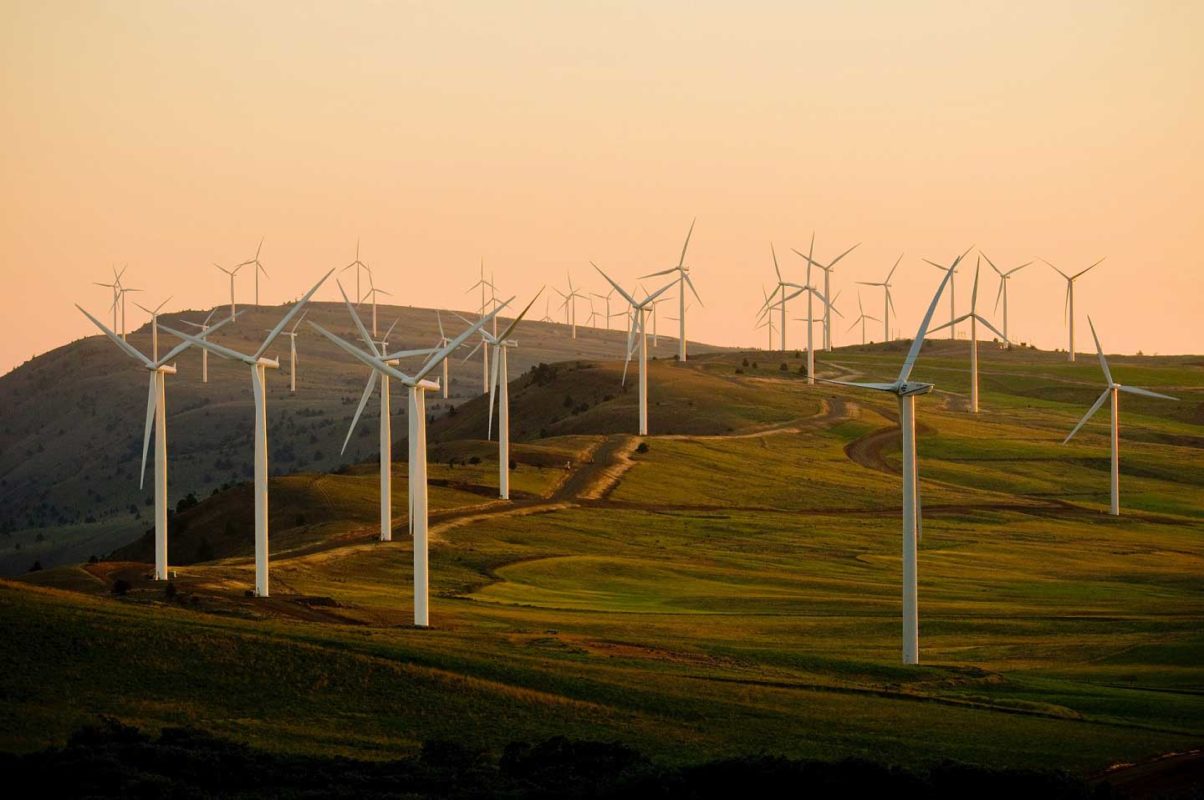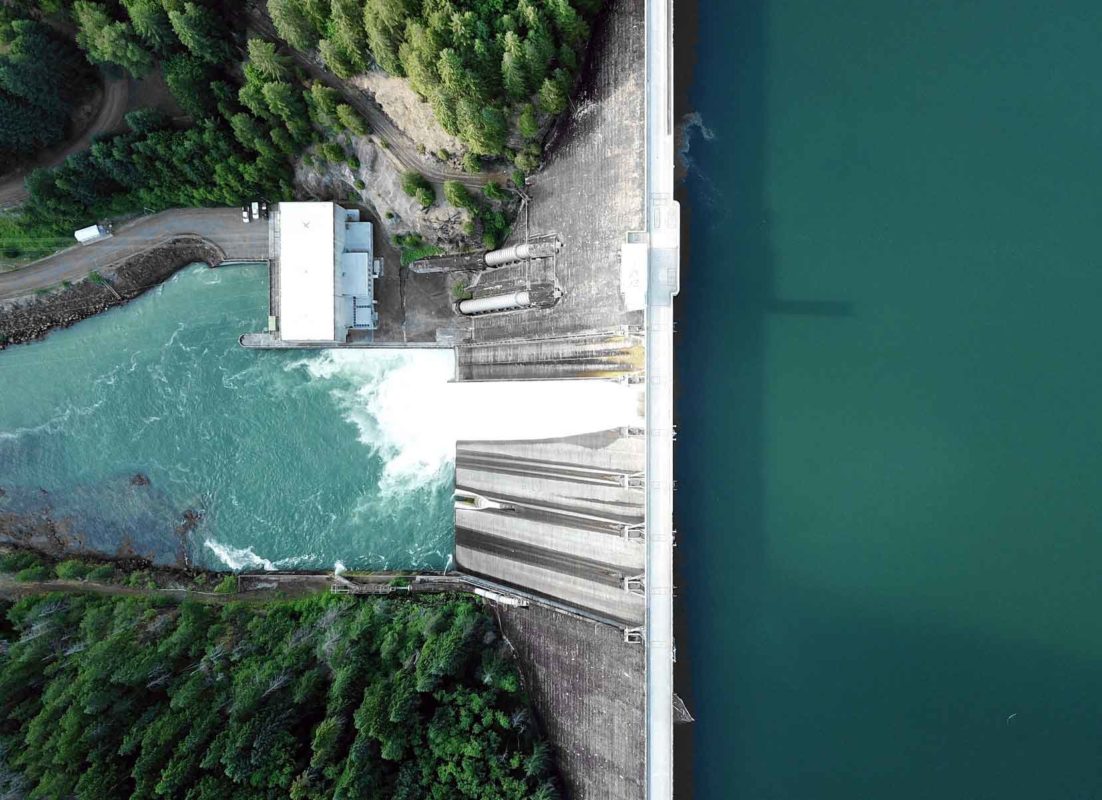What is Renewable Energy?
Renewable energy can be defined as the energy obtained from natural sources or processes that are replenished continuously. Thus, renewable energy resources are not going to deplete after usage. Sustainability is an essential factor when considering energy resources. Energy resources must be sufficient to provide the energy requirements for the day to day life of humans.
Fossil fuels like petroleum, natural gases, and coal are the widely used energy resources. These energy resources are non-renewable, which means these energy resources are depleted due to consumption. The world energy requirement is increasing day by day with the increase of population and human activities. But, current energy resources are decreasing. So, it is crucial to consider energy resources that can be used for the long term. Therefore, the world is now focusing on sustainable, renewable energy resources like wind energy, solar energy, hydropower, biomass energy, tidal power, and geothermal energy.
A lot of non-renewable energy resources can threaten the environment or human health. Renewable energy resources produce clean energy with less pollution and greenhouse gas emissions. But, renewable energy usage might be less reliable than non-renewable energy because there can be seasonal changes in the amount of energy produces. Technological development might be able to address these challenges and improve the feasibility and reliability of renewable energy resources.
Solar Power

Solar power is a better renewable energy option that naturally and freely available and clean. The solar radiation can convert into thermal or electrical energy and use it to satisfy the energy requirements. If simply elaborated, the amount of solar power reaches the earth’s surface within one hour, exceeds the total annual energy requirement of the planet. Thus, solar energy can identify as the best renewable energy resource. But, the amount of usable solar power depends on the time of the day, the season of the year, and geographical location.
Solar technologies use to obtain solar energy for different purposes like electricity generation, lightning, water heating, etc.
Several solar energy technologies developed to enhance the practical usage of solar energy;
- Photovoltaic Systems
- Solar Hot Water
- Solar Electricity
- Passive Solar and Daylighting
Photovoltaic Systems
Photovoltaic cells (solar cells) in solar panels convert sunlight into solar energy with the use of n-type and p-type semiconductor materials. After absorbing sunlight by semiconductor materials, an electric current generates due to the movement of electrons. This is known as the photovoltaic effect.
Solar cells are generally combined into modules, and these modules are mounted on PV arrays. These flat-plate PV arrays can install into a fixed angle or can mount on a tracking device that follows the sun. A few numbers of PV arrays can provide sufficient power for a household. Large PV systems can supply the energy required for industrial applications.
Solar cell performance can measure via the efficiency of converting sunlight to electricity. Some amount of solar energy creates electricity, while much energy reflects or absorbed by the material of the cell.
Solar Water Heaters
Solar water heaters heat up water using solar power. It consists of a collector, a storage tank, and a circulation system. There are different types of collectors like the batch collector, flat plate collector, and evacuated tube collector.
Circulation systems can either direct, indirect (closed-loop), active (forced – circulation), or passive. Direct systems circulate water through solar collectors and directly heat by solar power. The heated water can directly use, send to a tankless water heater, or store in a tank. Indirect circulation systems use the non-freezing liquid in solar collectors to transfer solar energy to water in a storage tank. The fluid heat up by solar thermal energy and then passes through a heat exchanger in the storage tank and cycle back to the collectors.
Active circulation systems use electric pumps, valves, and controllers to flow water from collectors to the storage tank. But, passive circulation systems allow natural convection to flow water from the collectors to the storage tanks when it heats up instead of using pumps.
Solar Electricity
Electricity can produce using the sun’s heat. Solar thermal electric technology converts solar energy into electricity. This technology uses reflectors (concentrators) like mirrors to focus concentrated sunlight on to a receiver. This receiver transfer heat to a conventional engine like a steam turbine, which generates electricity. Solar thermal systems categorize as power towers (central receivers), solar dish generators, and parabolic troughs.
Passive Solar and Daylighting
Buildings can design to take advantage of naturally available solar energy by employing passive solar heating and daylighting. Passive solar designs use solar energy for heating and cooling of living spaces by exposure to the sun. The materials which can absorb and store the heat energy can use for sunlit floors and walls. They will heat up during the day from sunlight and release heat at night when required. This is known as direct gain.
Sunspaces and Trombe walls are also passive solar heat design features. When sunlight passes through the glass, the sunspace warms up, and proper ventilation will able to circulate heat into the building. Conversely, the Trombe wall is very thick, which is made out of heat-absorbing material and painted in black. A glass panel helps to hold the heat, installed a few inches in front of the wall. During the daytime, the wall slowly heat-ups and gradually release heat inside the building during night time.
Daylighting is the usage of natural sunlight to brighten up the interior of a building. This will reduce the lighting cost during day time.
Advantages of Solar Energy
- Solar energy is undoubtedly a renewable energy resource. As long as the sun is available, we can access solar energy.
- Solar energy usage can reduce the electricity bill as a portion of the energy requirement can be fulfilled by solar energy. Furthermore, there is a possibility to receive an income if the excess power is supplied to the grid.
- Solar energy can use for different applications like generating electricity or heat.
- Solar energy systems don’t require much maintenance. Thus the maintenance cost is meager.
- Solar power usage is safer than using traditional electricity.
- There is no greenhouse gas emission after installation.
- Solar panels can install anywhere in a field or on a building.
- Solar power reduces the dependence on fossil fuels.
Disadvantages of Solar Energy
- The initiation cost of a solar energy system is relatively high as the costs for solar panels, inverter, batteries, wires, and installation cost.
- The initiation cost of a solar energy system is relatively high as the costs for solar panels, inverter, batteries, wires, and installation cost. The efficiency of the solar energy system relies on the weather. The energy collection efficiency will reduce at rainy and cloudy days. And also, solar energy can only be harvested during day time, not in the night.
- Solar energy has to use right away or stored in large batteries. Even though solar energy can be used during night time by storing batteries, it is quite expensive.
- Solar panels require a large space. The more energy is needed, the more solar panels have to be installed.
- Even though the pollution associated with the solar energy system is far less, there can be environmental impacts during transportation and installation of the solar systems and the manufacturing of solar photovoltaic cells.
Wind Energy

Wind power generation is a sustainable renewable energy solution to supply the current energy requirement of the world. It is a clean, free, and naturally available renewable energy resource. Wind power plants produce a considerable amount of electricity and provide it to the grid. People used wind energy for ages with the use of simple windmills. Windmill technology has been continuously developing to harness maximum wind power.
An individual wind turbine has a comparatively small physical footprint. A single wind turbine can generate sufficient electricity for domestic usage. A group of wind turbines is known as a wind farm or wind power plant. Wind farms generally locate on open land or offshore in lakes or ocean. Wind power plants produce a vast amount of electricity and provide it to the grid. With the use of simple windmills, people have used wind energy. Windmill technology has been continuously developing to harness maximum wind power.
Wind turbines convert wind energy into electricity. A wind turbine generally consists of three large blades known as the rotor. The rotor attaches to the top of a tall tower. Winds are stronger at far away from the ground surface. Thus, wind tower is much taller to capture intense wind energy. Winds occur due to the atmospheric changes. Differences in pressure and temperature occur due to the effect of the sun, allow air movements around the earth’s surface.
Wind turbine’s blades spin clockwise when the wind blows and capture the wind energy. This leads to rotating the main shaft that connects to a gearbox. The gearbox transfer energy to the generator, and electricity is produced with the rotation of the generator. If clearly elaborate, wind energy converts to mechanical energy by wind rotor and then that mechanical energy converts to electrical energy by a generator.
There are two types of wind turbines.
- Horizontal axis wind turbine
- Vertical axis wind turbine
Horizontal axis wind turbines are a widely used type.
Advantages of Wind Power
- Wind power is cost-effective. It is the cheapest energy resource currently available.
- The wind is a clean energy resource. Unlike general power plants that combust fossil fuels, wind power doesn’t emit any greenhouse gases or particulate matter that cause environmental pollution.
- The usage of wind energy reduces the use of fossil fuels that cause environmental pollution.
- Wind energy is sustainable. Wind occurs due to the temperature and pressure changes of the atmosphere created by the sun, the rotation of the earth, and the surface irregularities of the earth’s surface. Since this natural phenomenon is not going to change, wind energy can harness and use to satisfy the energy requirement.
- Wind turbines can build on suitable lands where high winds occur. Wind turbines will be able to locate in existing farms or ranches in rural areas. The space required to establish a wind turbine is comparatively less. Either the farmer can use the obtained energy, or he can sell the energy output to the national grid.
Disadvantages of Wind Power
- Wind turbines can cause noise due to the rotation of blades. Even though there is less environmental impact compared to conventional power plants, a wind power plant may cause noise pollution.
- There can be more profitable usage of the land rather than building a wind farm. Therefore, the alternative use of the land should be considered before establishing a wind farm.
- There can be an adverse impact on nature due to wind power plants. Birds and bats were killed by flying to spinning turbine blades. Behavioral patterns of wildlife should be considered when locating a wind plant. Technological developments and proper site selection must be made to reduce this environmental impact.
- Comparatively, the energy requirement of urban areas is higher than in rural areas. The best wind sites are located far from the city. Thus, transmitting lines should build from a wind power plant to urban areas to supply electricity.
Hydro Power

Hydropower means the usage of energy of the moving water to make electricity or power machinery. This is the most commercially developed renewable energy resource and more reliable than solar or wind power. Hydropower depends on the water cycle. Water evaporates from the surface of natural water resources like oceans, rivers and then vapor condensed in clouds and precipitate back as rain or snow. The amount of precipitation drains into rivers, and water streams in a particular geographical area determines the amount of water available for the generation of hydropower. Seasonal climatic effects and droughts can hugely affect hydropower production.
The energy of the water cycle captures to produce electricity or to do mechanical tasks. Hydropower uses water, which neither reduces nor use up during the power generation process. This is a renewable energy resource because the water cycle is endless and continuously recharges the system.
Types of Hydro Power Facilities
There are three types of hydropower facilities.
- Impoundment
- Diversion
- Pumped storage
Some hydropower plants use dams, whereas others don’t. This all facilities are powered by the energy of flowing water to the downstream. Turbines and generators convert the energy into electricity and feed to the grid to satisfy the energy demand.
Impoundment
This is the most widely used hydroelectric power facility. The impoundment facility is an extensive hydropower system that uses a dam to store river water in a reservoir. Water release from the reservoir flows through a turbine and rotates it. The kinetic and potential energy of water converts to the kinetic energy of the turbine. Then the turbine activates the generator and converts the kinetic energy to electrical energy. Water flow changes either to fulfill the electricity demand or to maintain a constant reservoir level.
Diversion
Diversion hydro system is also known as the run-of-river hydro system. This facility doesn’t require a dam—a portion of the water from rapid flowing rivers diverse through a canal or a penstock. Diversion sites are generally located near waterfalls or in a mountainous area, where good head for the turbine can be gain quickly. Neither water flows manage, nor water stored. Thus, the amount of electricity can vary widely.
Pumped storage
Pumped storage hydropower facility consists of two water reservoirs at different elevations. Power generation occurs when the water flows downward through a turbine from the upper reservoir to the lower reservoir. When the electricity demand is low, this system stores energy by pumping water from the lower reservoir to the upper reservoir. There are two types of pump storage hydropower facility; open loop or closed loop. The open-loop type has an ongoing hydrological connection to a natural water body, whereas the close-loop type doesn’t have any relation to an outer water body.
Scales of Hydro Power Facilities
Hydropower facility ranges from large power plants, which supply a massive amount of electricity to many consumers to small and micro-scale plants, operated by individuals that provide energy to satisfy their own demand or sell power to utilities.
Large Hydro Power Plants
Large hydropower plants generate more than 30MW, which provides electricity for a massive amount of consumers and industries.
Small Hydro Power Plants
Small hydropower facilities produce 10MW or less power that gives electricity to remote communities with the possibility to supply electricity to the regional grid.
Mini Hydro Power Plants
Mini hydropower facilities have a capacity up to 100kW and can provide enough electricity for a home, farm, factory, ranch, or a village.
Advantages of Hydro Power
- Hydropower is a renewable energy resource because it uses only the flow energy of water and doesn’t reduce the quantity of water during power generation.
- Even though the hydropower system huge cost to establish, it has little maintenance cost and can be operated for over 100 years.
- Since water can store above dams, it can use to generate electricity when required.
- The hydropower plant doesn’t release any pollutants to the air or produce any toxic materials.
- Hydroelectricity has a guaranteed energy and price stability because water is naturally available and not subject to any market fluctuations like fuels or natural gas.
Disadvantages of Hydro Power
- Find a location to establish a hydropower plant might be difficult because reservoirs require large areas.
- There can be adverse social and environmental impacts like ecosystem damage, land loss, displacement of people, failure risks, etc.
- Electricity distribution costs might be high since hydropower plants are located in rural areas. And also, there can be significant losses in the distribution grid.
- Hydroelectricity depends on the water cycle. Water precipitation levels can be fluctuating from seasonal changes and can cause instability.
- Hydropower is hydrology dependent. The system depends on precipitation levels, which can vary from year to year, causing instability.
Biomass

Biomass is the organic material that originates from plants and animals. It is a renewable energy resource because it can regrow in a relatively short period, and biomass contains energy, ultimately comes from the sun. Plants absorb solar energy during the photosynthesis process. The chemical energy that stores in plants and animals or animal waste consider as biomass energy. The chemical energy of biomass releases as heat when it is subject to burn.
Sources of biomass are as follows.
- Wood from natural forests and woodlands
- Animal wastes (cow manure, poultry litter, etc.)
- Agricultural residues such as cane trash, straw, stover, and green agrarian wastes
- Forestry plantations
- Forestry residues
- Agro-industrial wastes, like sugarcane bagasse and rice husk
- Industrial wastes, such as black liquor from paper manufacturing
- Sewage
- Food processing wastes
- Municipal solid wastes (MSW)
Solid biomass like wood and garbage can directly burn to produce heat. And also, biomass can convert into gaseous fuel, known as biogas. Furthermore, biomass can convert into liquid biofuels like ethanol and biodiesel. Then the liquid fuels burn to produce energy.
Biogas
Biogas naturally generated via the breakdown of organic matter by anaerobic bacteria, and it can use in energy production. It mainly consists of methane, carbon dioxide, and a minimal amount of carbon monoxide, nitrogen, and hydrogen. Sewage, food processing waste, animal manure can use to produce biogas in unique biogas generating units, known as anaerobic digesters. Biogas can burn to generate heat or use to produce electricity in combustion engines.
Liquid Biofuels
Ethanol and biodiesel are the liquid biofuels derived from biomass materials. Ethanol produce via the fermentation of crops such as sugar cane and corn. Microorganisms metabolize plant sugars and produce ethanol during the fermentation process.
Biodiesel produces by combining alcohol with vegetable oils and animal fats via a chemical process known as transesterification. Glycerin and methyl esters are the two products obtained from transesterification. Glycerin separate from methyl esters to produce biodiesel. This is a cleaner replacement for petroleum-based diesel fuels. Biodiesel either blends with petroleum diesel in any percentage or purely use in diesel engines. Biodiesel is non-toxic as well as biodegradable.
Advantages of Biomass Energy
- Biomass energy produces a smaller amount of harmful greenhouse gases compared to fossil fuels.
- The level of greenhouse gases like methane and carbon dioxide can reduce via the use of biomass energy because carbon dioxide and methane can produce by organic matter if it is left to decay without using for any purpose.
- Biomass energy emits a meager amount of sulfur dioxide, which causes acid rains.
- Biomass energy can use for different purposes like electricity production, fuel for vehicles, and heat production.
- This is sustainable if energy crops farm and managed effectively.
Disadvantages of Biomass Energy
- Cultivation of biomass crops requires considerable space, and large storage capacity needs to store biomass before processing.
- This is not a totally clean energy resource as it produces some amount of greenhouse gases. But emission levels are less compared to the gases that have from fossil fuels.
- Biomass is a relatively expensive energy resource, as the labor and transportation costs are considerable.
Geothermal Energy

Geothermal energy can define as the heat energy within the earth. This is a renewable energy resource because the heat continuously produces inside the earth’s core. This energy can use to produce electricity, heat buildings, or heat water for bathing. Geothermal energy can be identified as a sustainable and renewable energy resource. It has less harmful emissions compared to fossil fuels. Earth core generates an unlimited amount of heat energy, and even in areas dependent on a reservoir of hot water, the extracted volume can reinject back.
This energy can capture via two methods; geothermal power plants and geothermal heat pumps.
Geothermal Power Plants
The geothermal power plants employ heat from deep inside the earth to generate steam to produce electricity. These power plants are mostly located in areas that have a lot of hot springs, geysers, or volcanic activity. Because these are the places where the earth is primarily hot just below the surface
In geothermal power plants, hot water is pumped from deep underground through a well under high pressure. As the water reaches the surface, the pressure drops. Thus the water turns in to the steam. This steam spins a turbine which connected to a generator to produce electricity. Then the steam cools down in a cooling tower and condensed to water. This water pump back into the earth.
Geothermal Heat Pumps
Geothermal heat pumps extract the heat energy close to the surface of the earth and use for heating water or heat up buildings. This system pumps water or a refrigerant to transfer heat. The water or the refrigerant absorbs the heat from the earth and heats up the building during winter. Heat pumps run reverse and cool down buildings during summer.
In geothermal heat, pumping systems, water or a refrigerant flow through a loop of pipes. During cold weather, the liquid heats up when streaming through the part of the loop that is buried underground. Then it transfers heat to the building once it gets back above the ground. After transferring heat, the liquid cools down and pumped back to the underground.
This system runs reverse on a hot day. Water or the refrigerant cools down the building by absorbing heat. Then it pumps underground, and the extra heat transfers to the ground.
Advantages of Geothermal Energy
- Geothermal energy is an environmentally friendly energy resource. This has less harmful emissions compared to fossil fuels.
- This is a renewable energy resource as long as the earth exists.
- Geothermal energy does not have cost fluctuations like gas or oil.
- Geothermal energy is a highly efficient and reliable energy resource as it doesn’t fluctuate like solar or wind.
- This is not weather dependent like solar or wind power. Thus geothermal heat pumps work year-round.
- This is most likely transferring heat that already exists as opposed to producing new heat.
- The heating system won’t suddenly turn off like standard furnaces, when out of gas or fuel.
- This system has minimum maintenance issues due to fewer moving parts.
- A geothermal energy system has a long term life span.
- This is a comparatively quieter operation because there is no outdoor compressor or fan.
- This system is suitable for the smallest of houses to the largest commercial spaces.
- A geothermal system has the smallest carbon footprint than any other heating or cooling system.
Disadvantages of Geothermal Energy
- A high upfront cost requires to implement a geothermal energy system.
- Electricity is still necessary to operate heat pumps.
- Large scale geothermal power plants might be dangerous to the earth’s surface and location-centric.
- Damage of the underground loops might be difficult and costly to repair.
- It requires an incredible usage of water when using geothermal energy wells.
- The discharge to the surface of the earth may include sulfur dioxide and silica.
- Geothermal energy is more suitable for new home builds because retrofitting in valves with extensive excavation.

